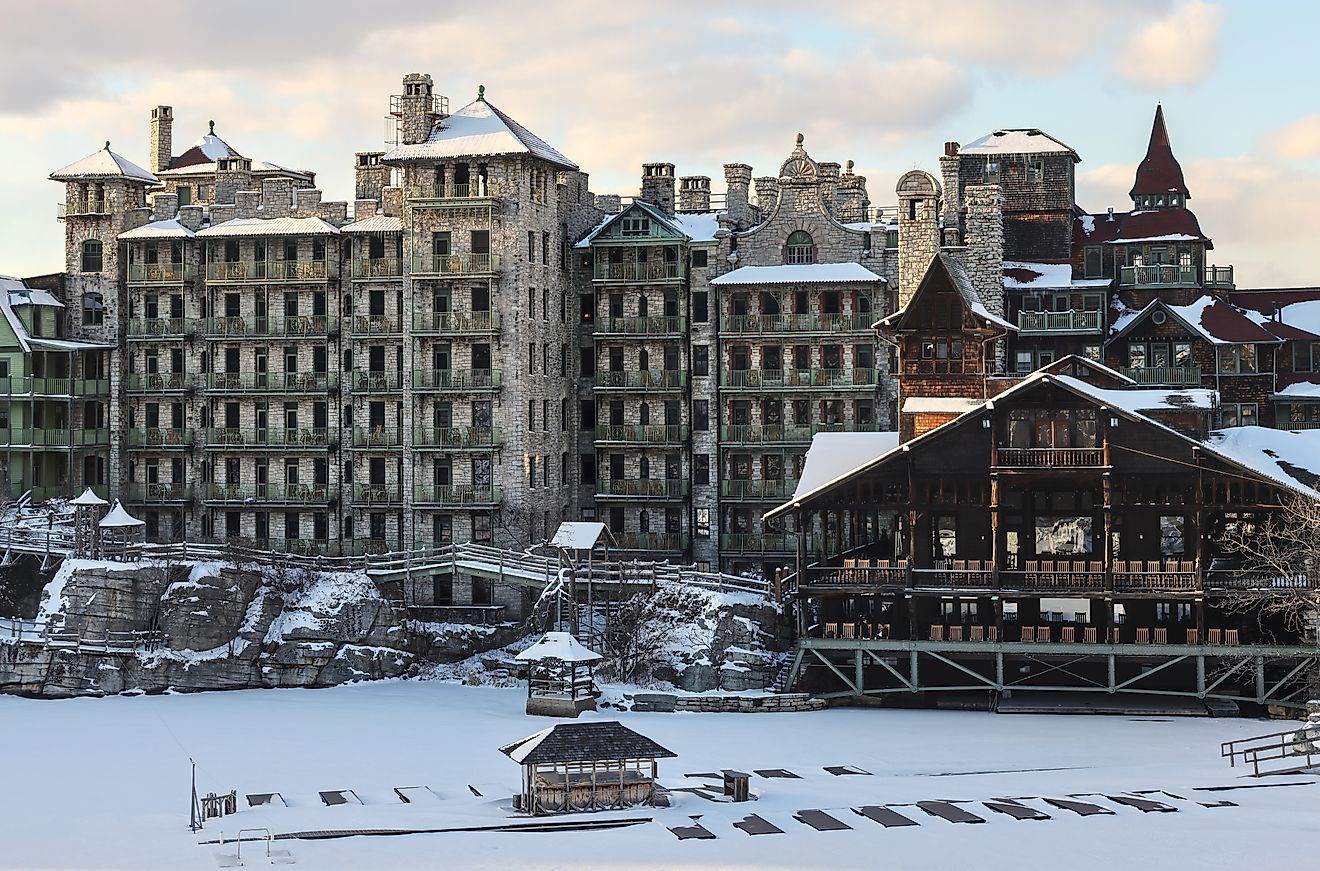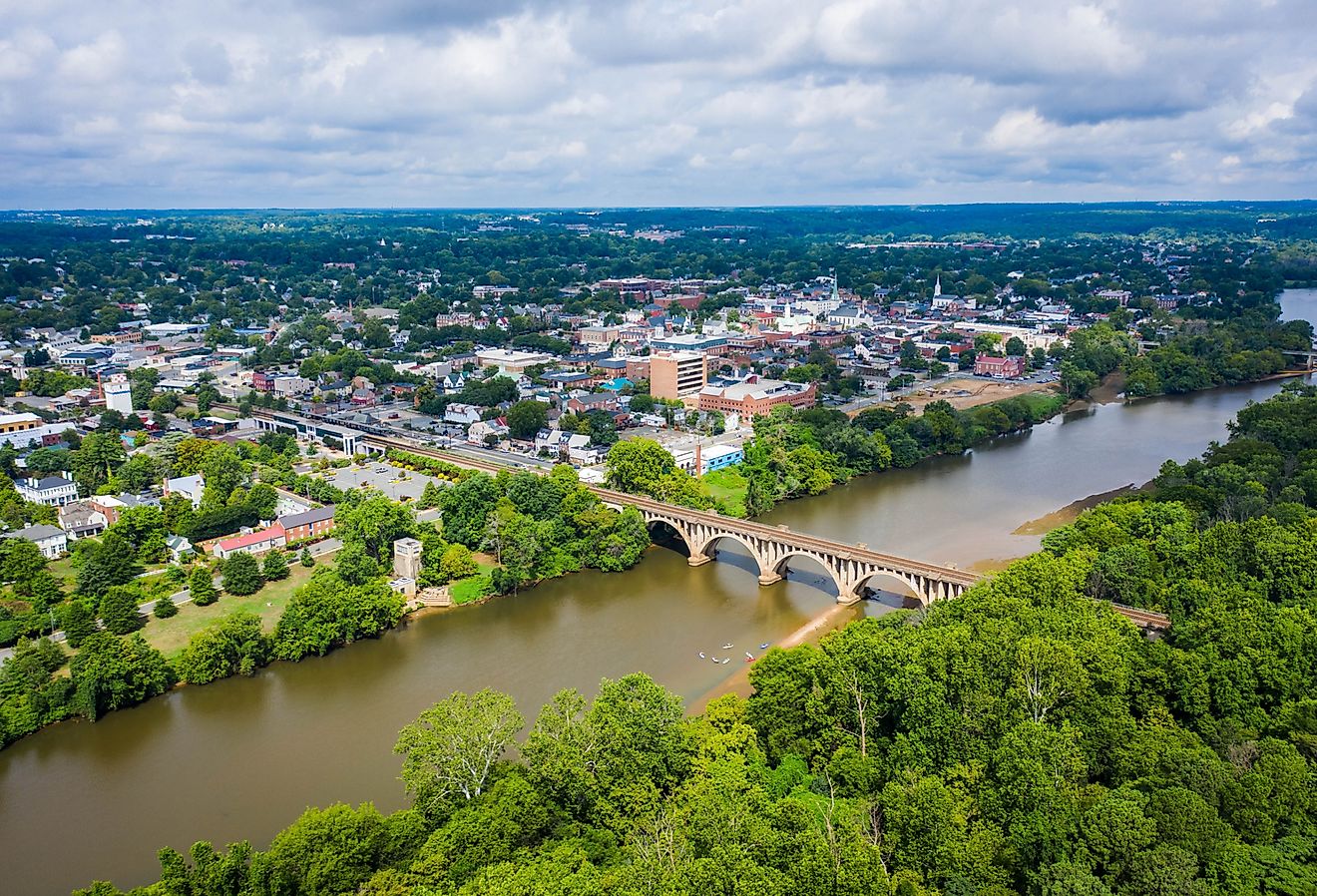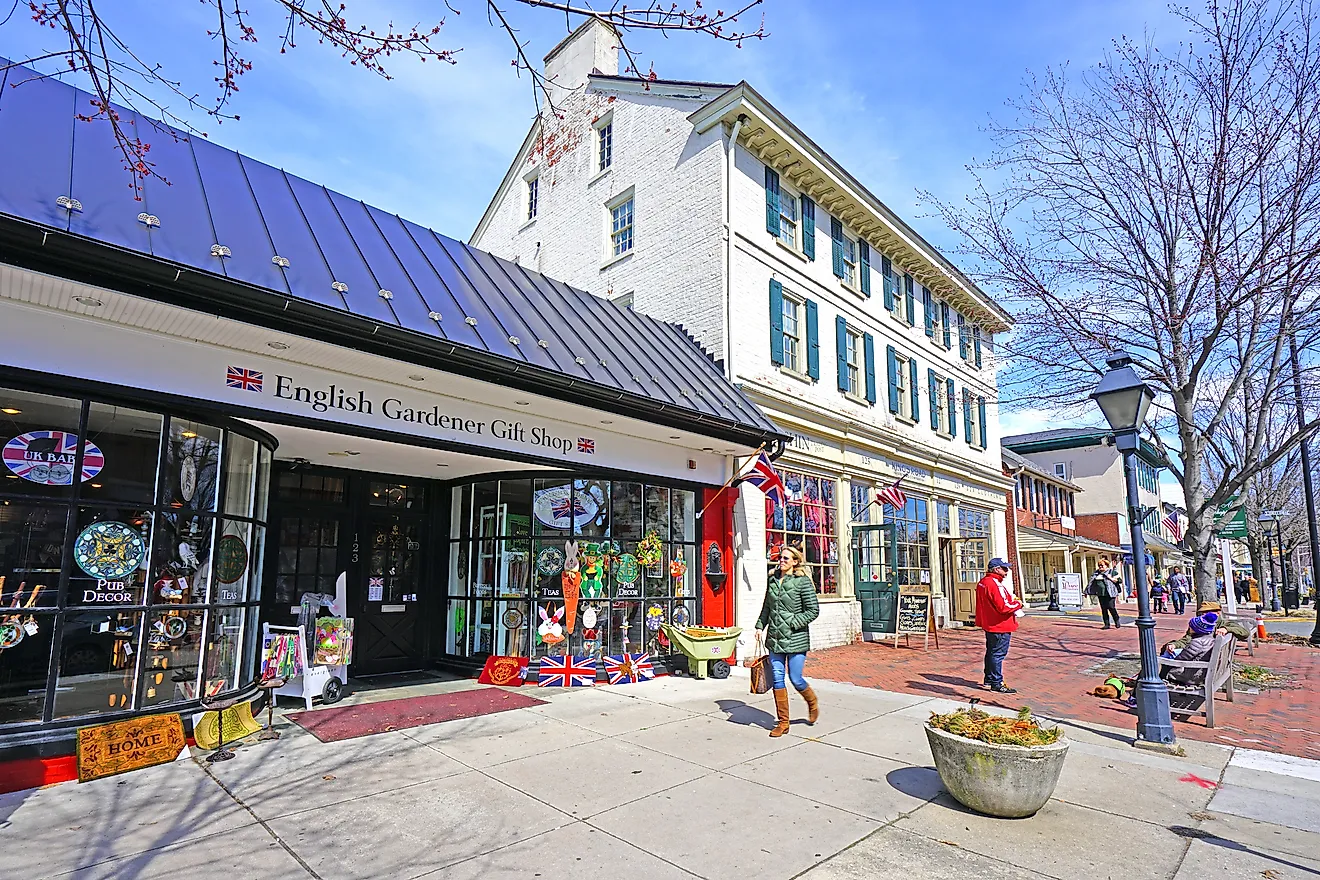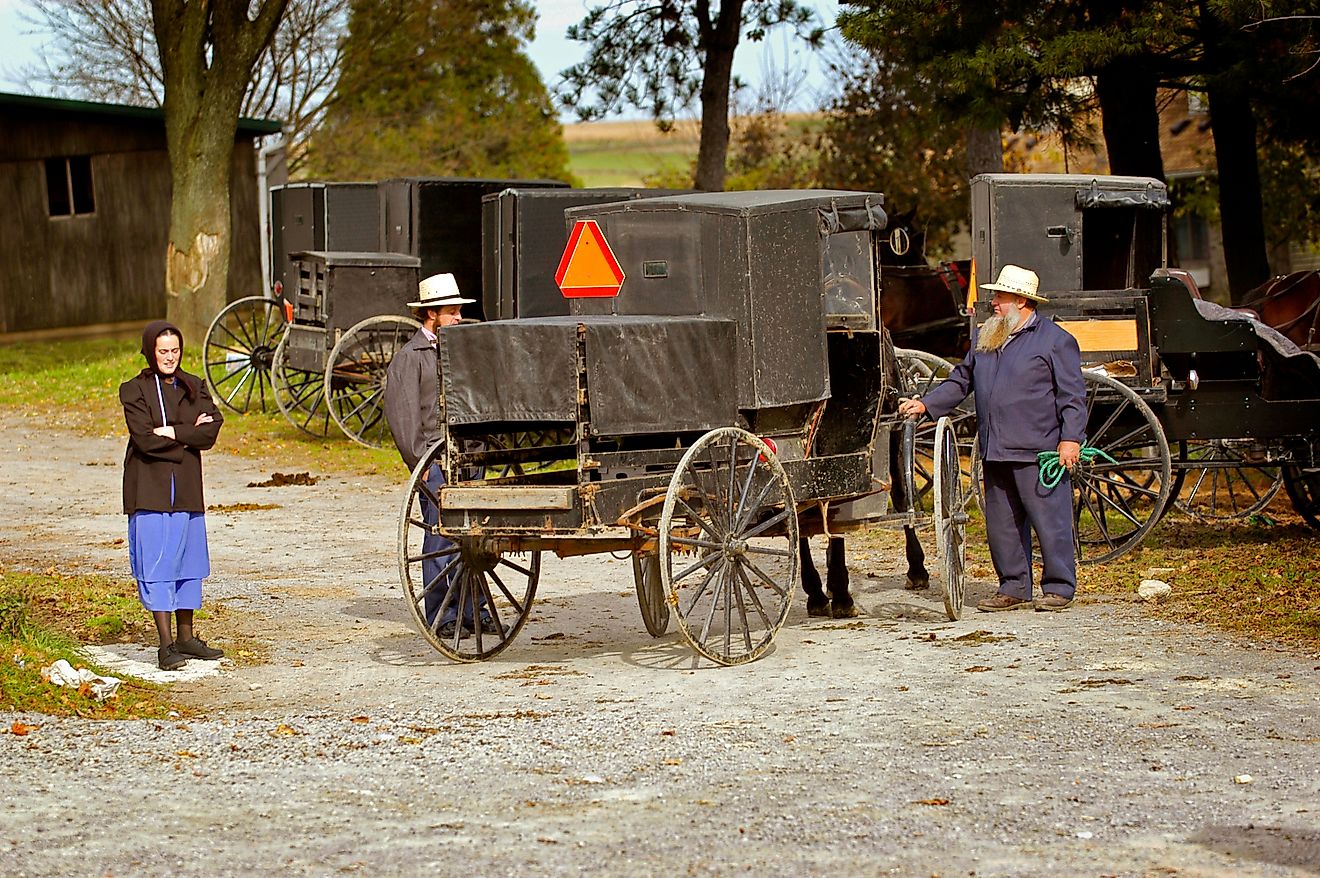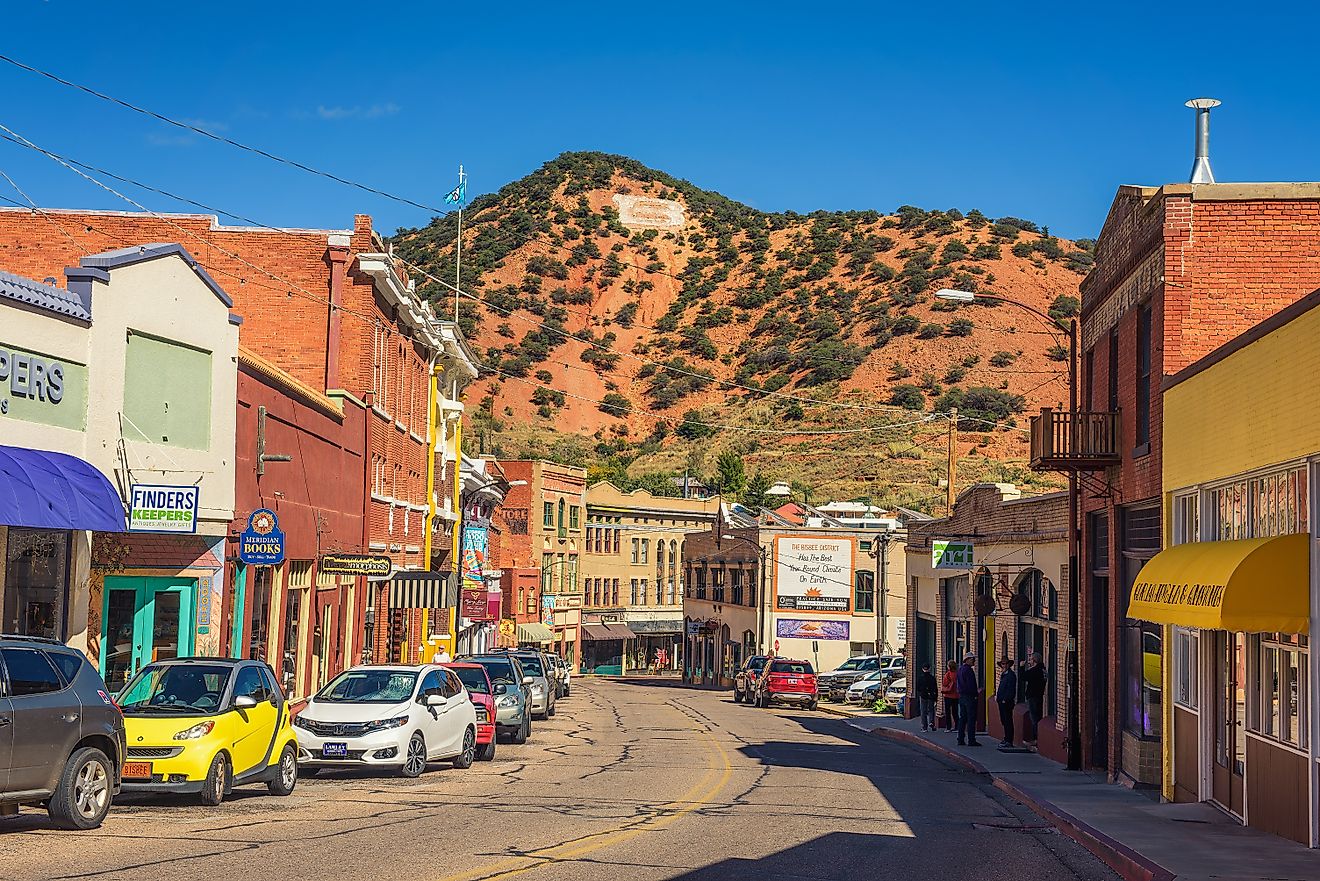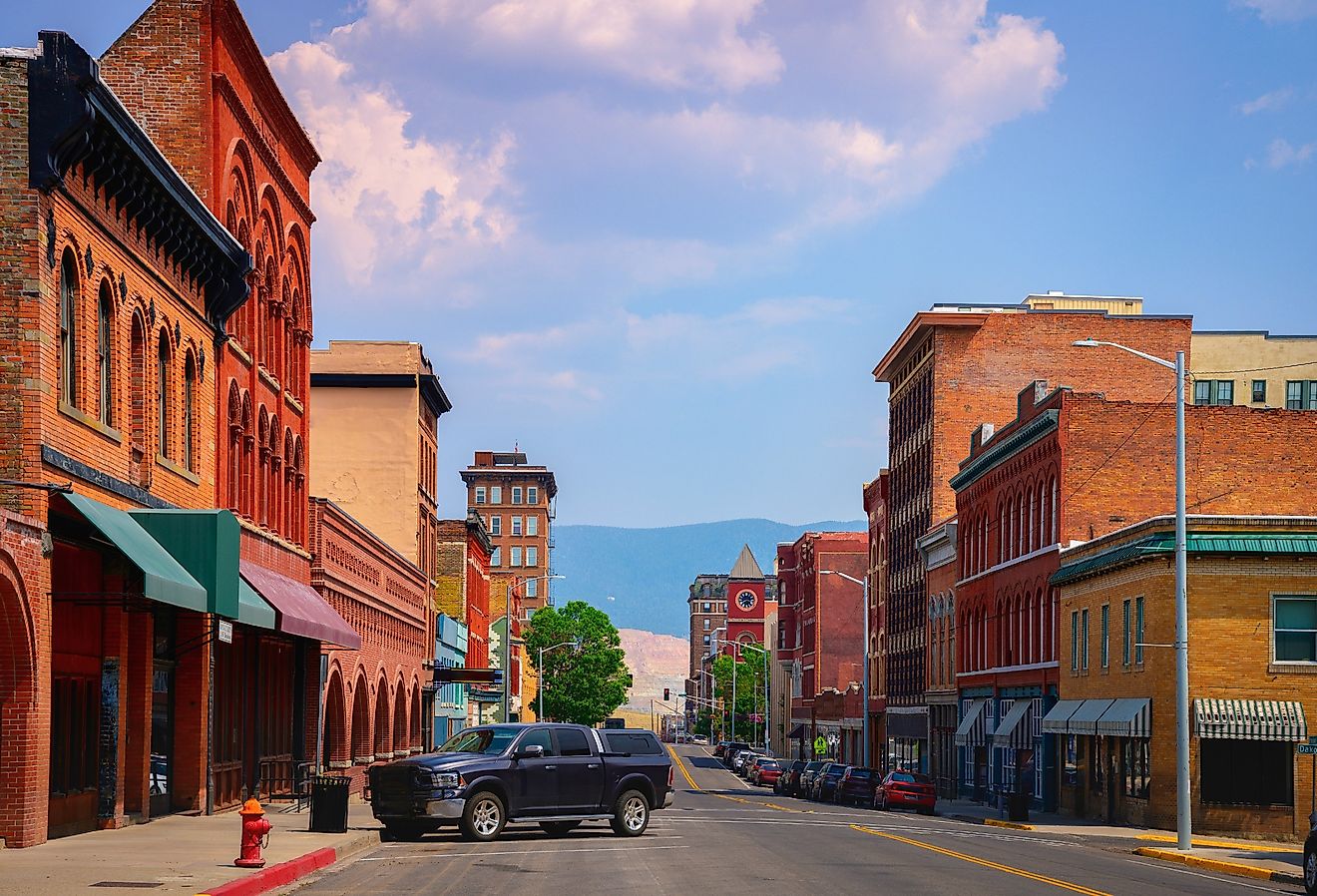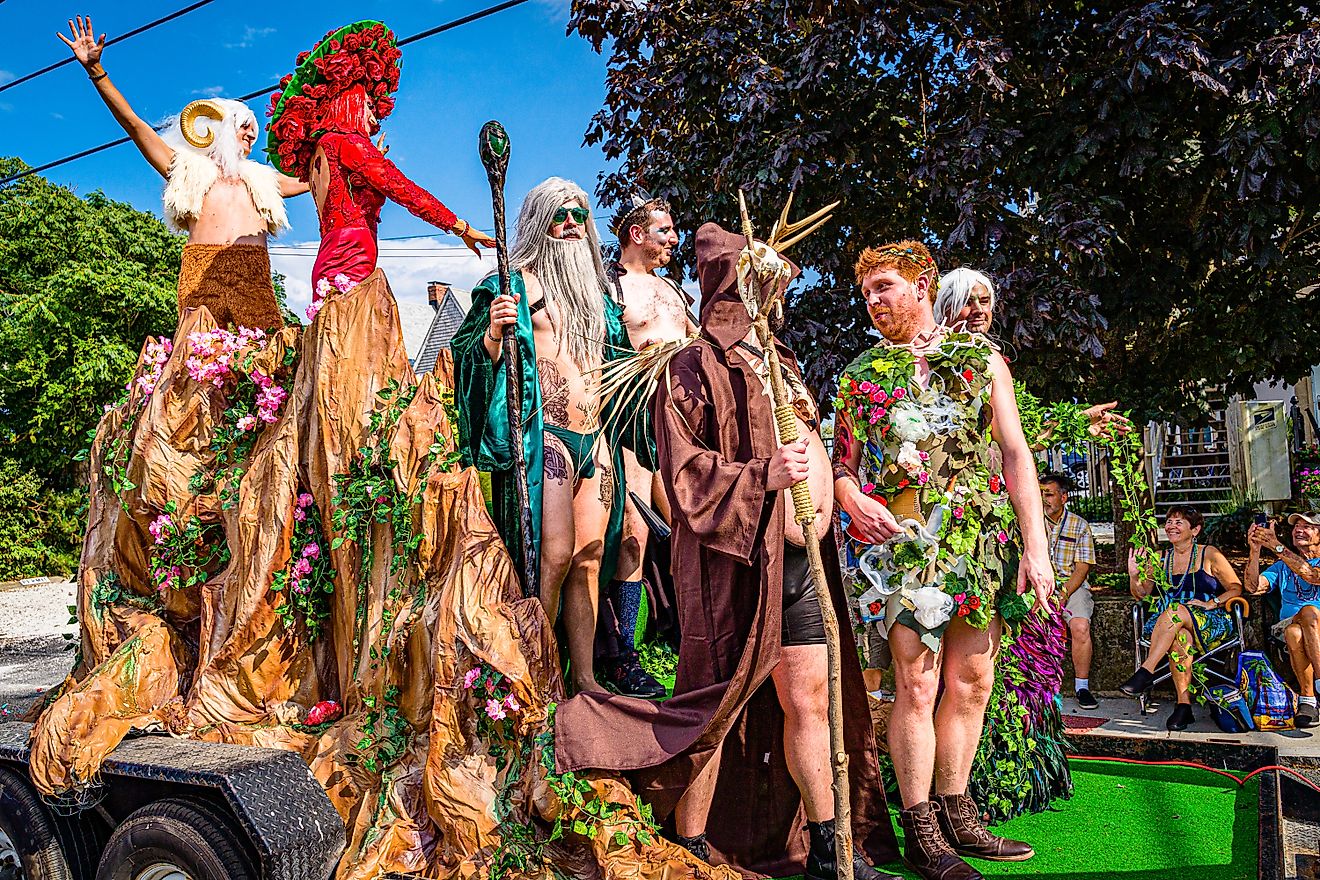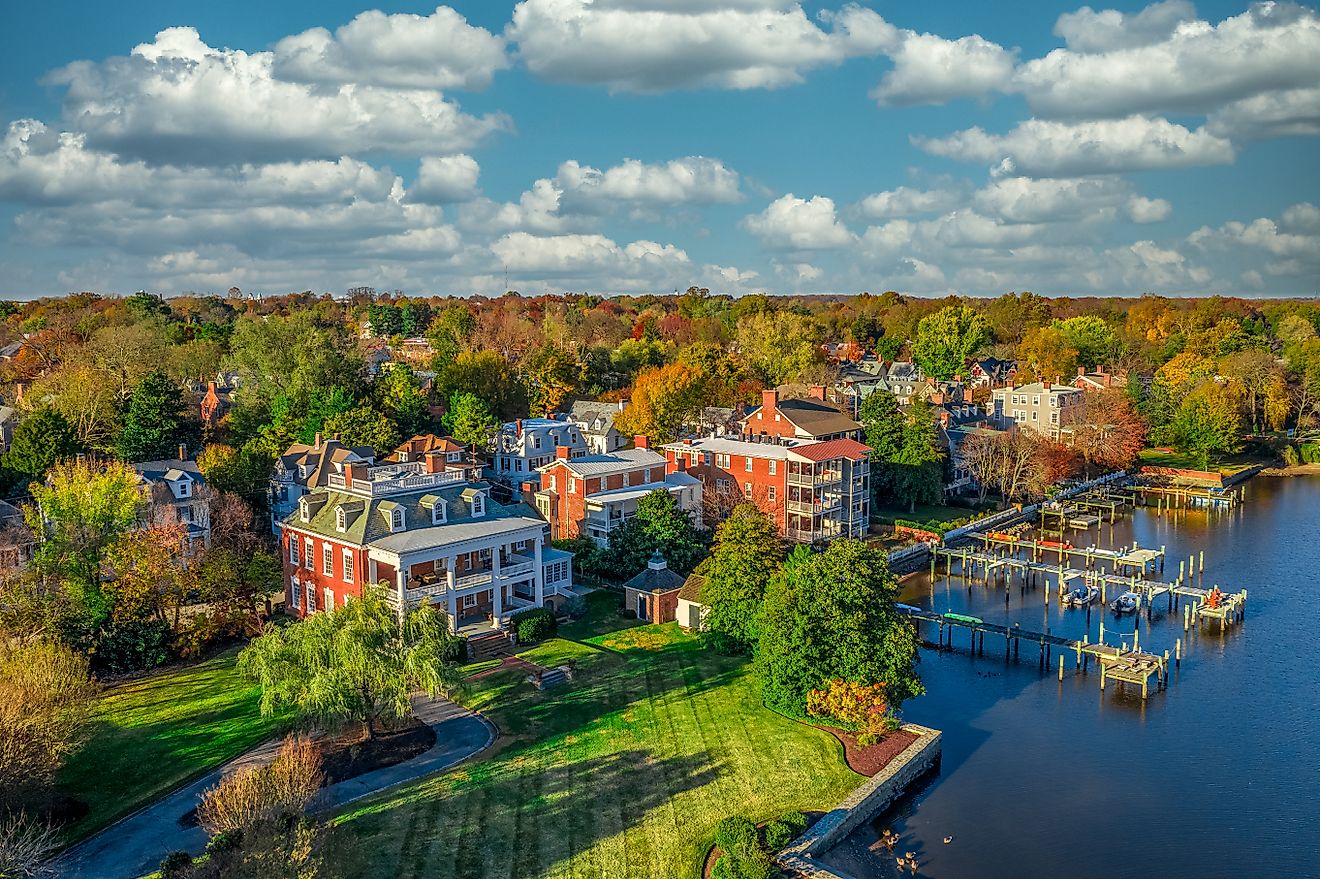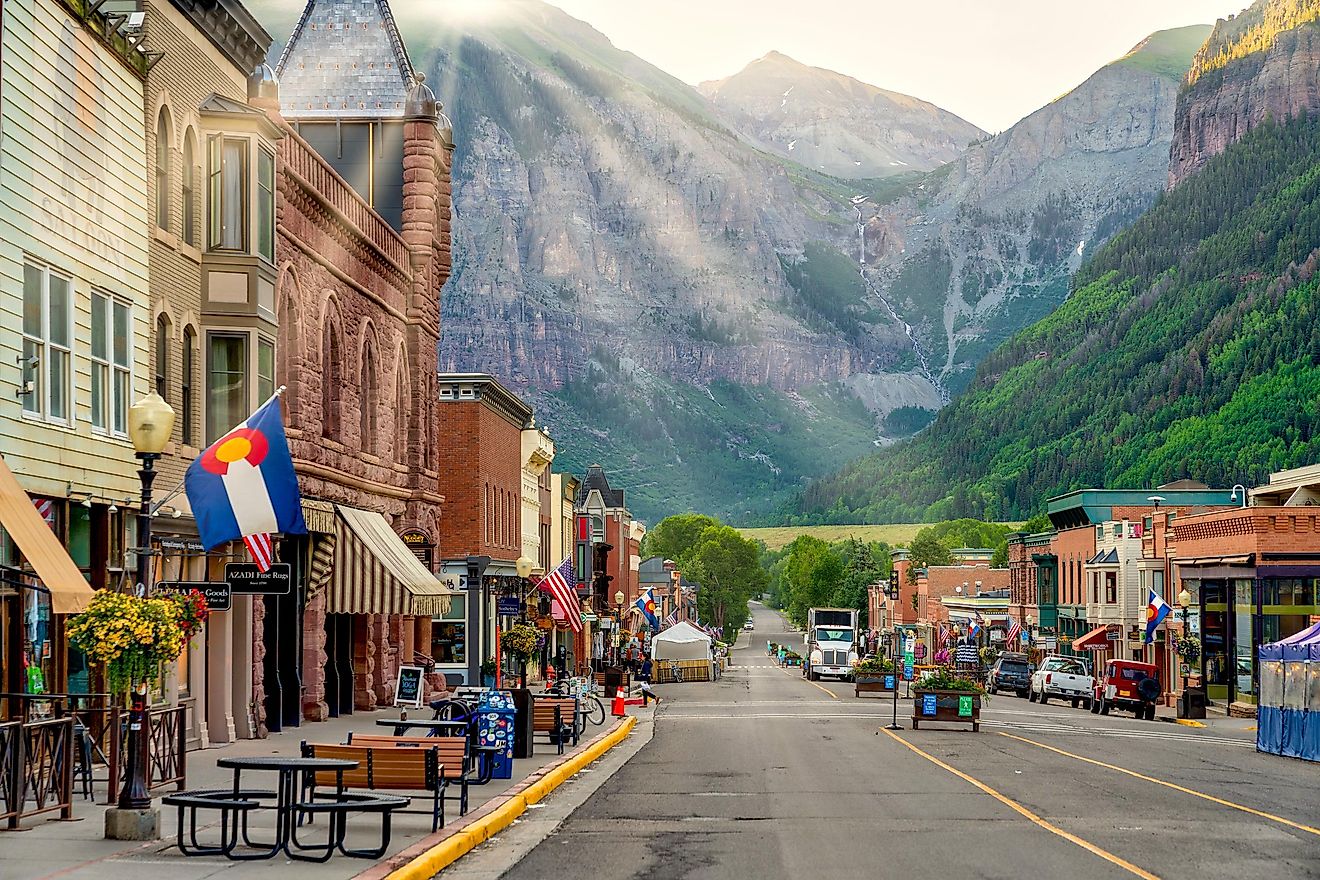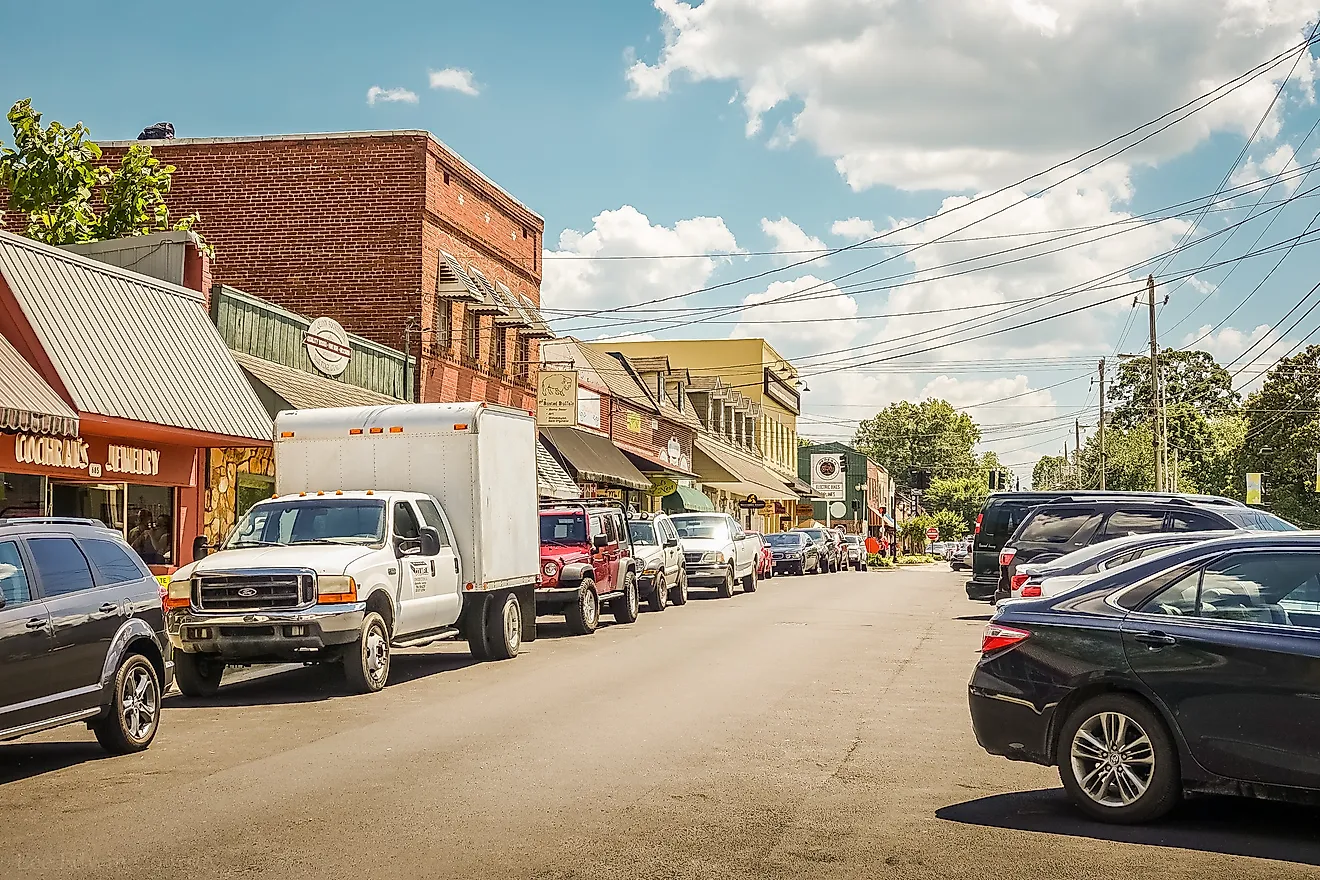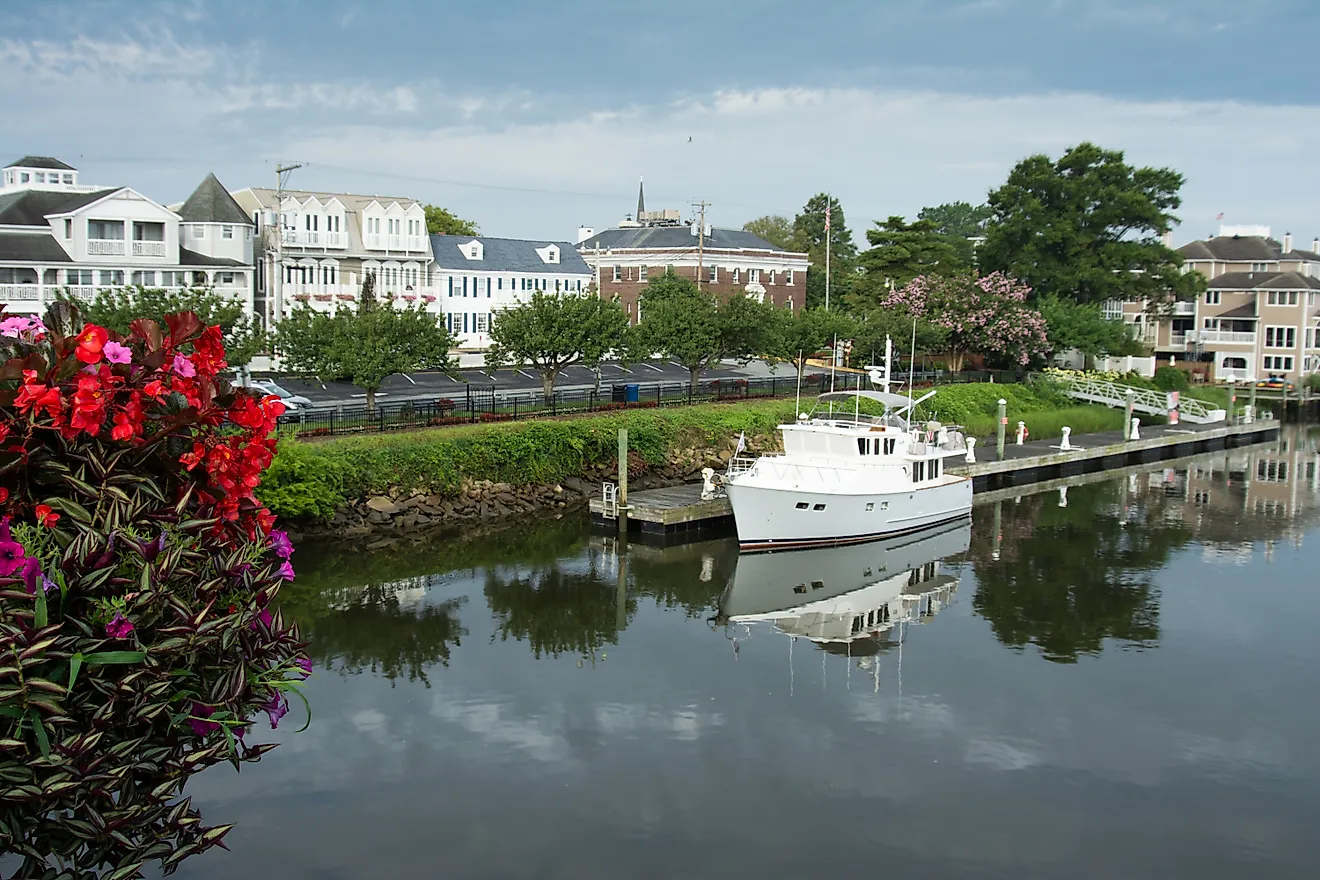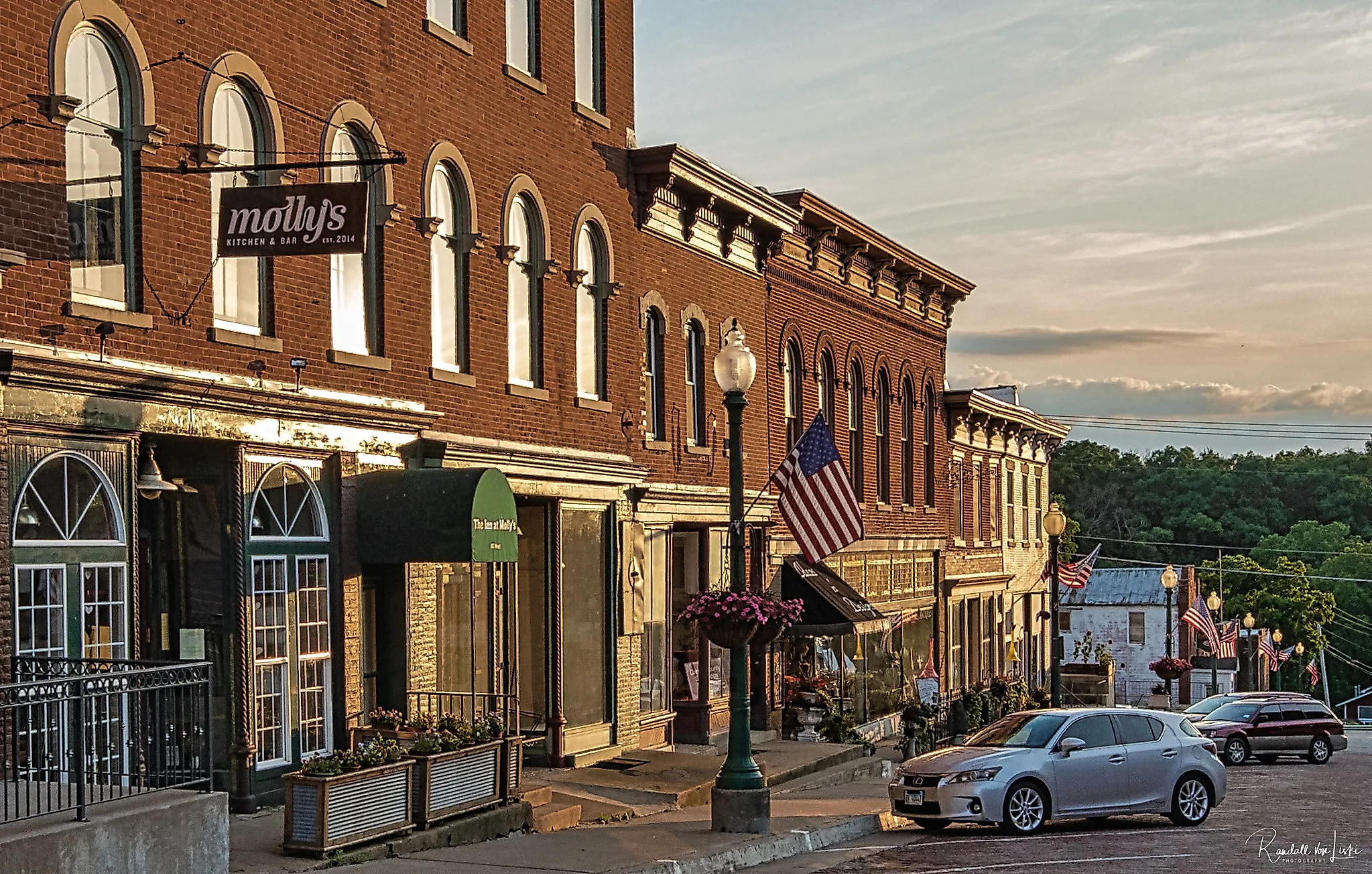
Illinois's 11 Most Laid-Back Towns For 2025
Illinois runs on two clocks: the interstate’s and the river’s. This list follows the slower one, the schedule kept by eagles over a confluence and by evening trains that don’t hurry. “Laid-back” here isn’t spa music; it’s a civic habit. It’s the absence of a stoplight and storefronts that kept their original names because no one had a better idea.
These 11 places prove the point. Consider this a field guide to deceleration in 2025, 11 Illinois towns where the pace isn’t curated; it’s customary.
Grafton
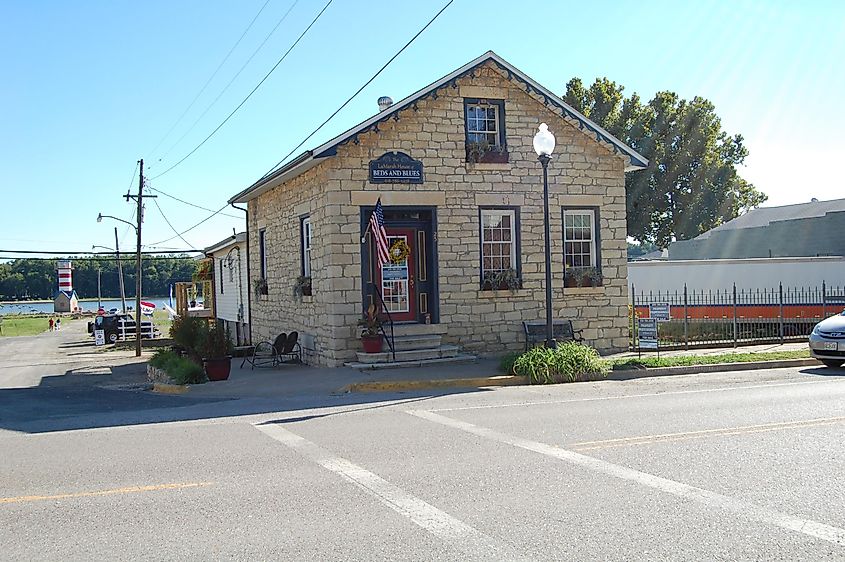
Grafton sits where the Illinois and Mississippi Rivers meet, a town shaped by water, cliffs, and seasonal migration. Its elevated homes and river-view cabins recall its flood-prone history, while the high bluffs above town offer a rare Midwest panorama, especially in winter, when bald eagles circle overhead in silence. Grafton is one of the few places in Illinois where tourism doesn’t outpace authenticity. It still feels like a river town, not a riverfront development.
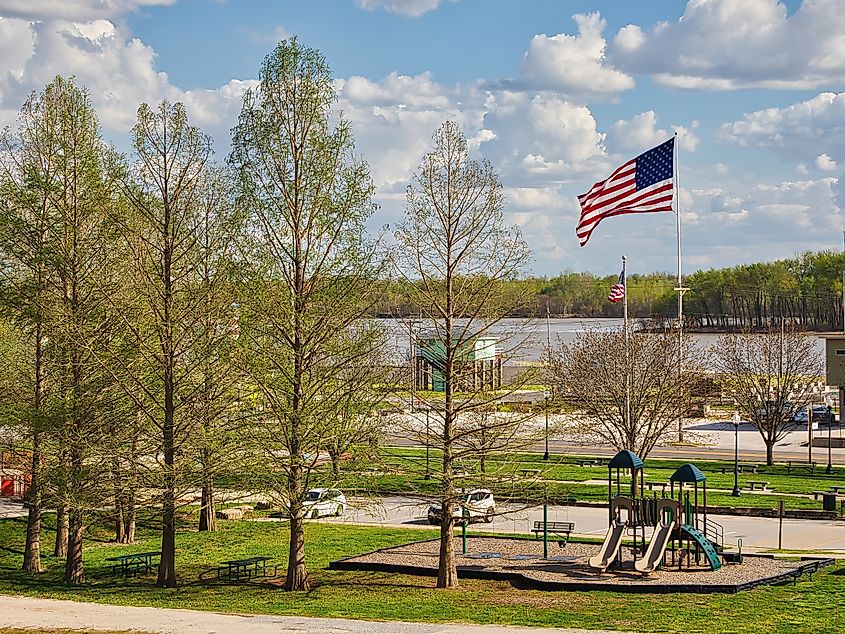
At Pere Marquette State Park, limestone outcroppings rise above dense hardwood forest, and the scenic drive to the top is worth repeating. Just outside town, Aerie’s Resort operates a chairlift that carries visitors over the tree canopy to its mountaintop winery. The Loading Dock, a seasonal riverside bar and restaurant built inside a former icehouse, anchors Grafton’s social scene from spring through fall. Nearby, Grafton Harbor rents pontoon boats and operates a riverboat with a tiki bar from its dock at the confluence, where barges move slowly past and the sun sets in open view.Main Street shops lean toward the handmade and the local, Grafton Winery & Brewhaus and Grove Memorial Park round out a compact downtown that knows how to slow down without ever feeling sleepy.
Casey
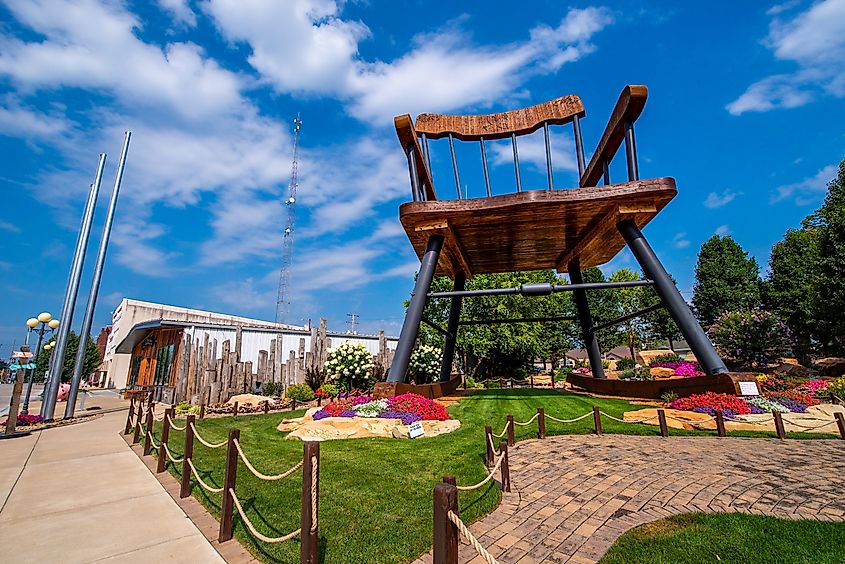
Casey built its identity on scale. With over a dozen Guinness World Records scattered through its downtown, including the world’s largest rocking chair, wind chime, and mailbox, it’s a town that turned whimsy into infrastructure. The installations aren’t just for show; many are functional. You can climb inside the mailbox, swing on the teeter-totter, or leave a note in the oversized birdcage. This ongoing public art project, led by local craftsman Jim Bolin, has redefined how a rural town can use sculpture as a civic engine without relying on nostalgia or tourism formulas.
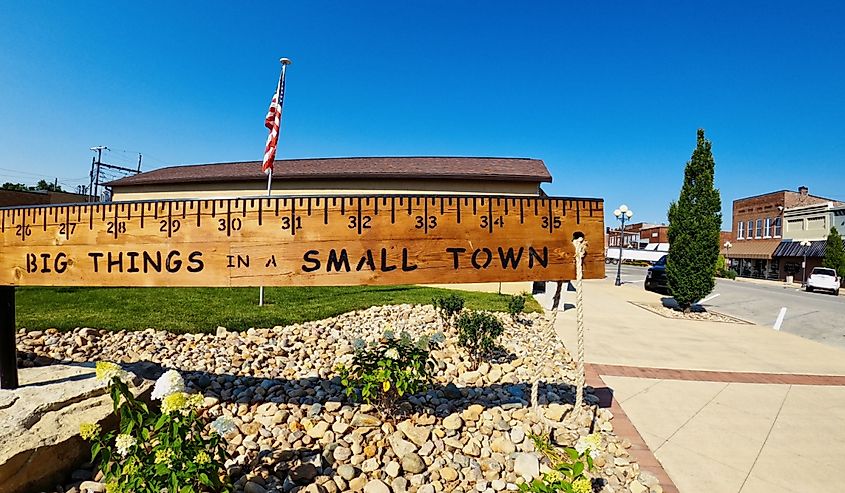
Beyond the big objects, Casey holds its pace. Richards Farm Restaurant serves fried chicken and house pies inside a converted dairy barn surrounded by pasture. Crazy 8’s Grill serves burgers, tenderloins, and salads, a casual, family-friendly spot near the Big Things downtown, with daily specials. At The Traveling Mug, a modest café just off Main Street, locals queue early for cold brew and biscuit sandwiches. In the center of town, Fairview Park anchors community events with a bandstand and picnic grove, but most afternoons it’s quiet, just basketball echoes and the occasional jogger circling the perimeter trail
Princeton
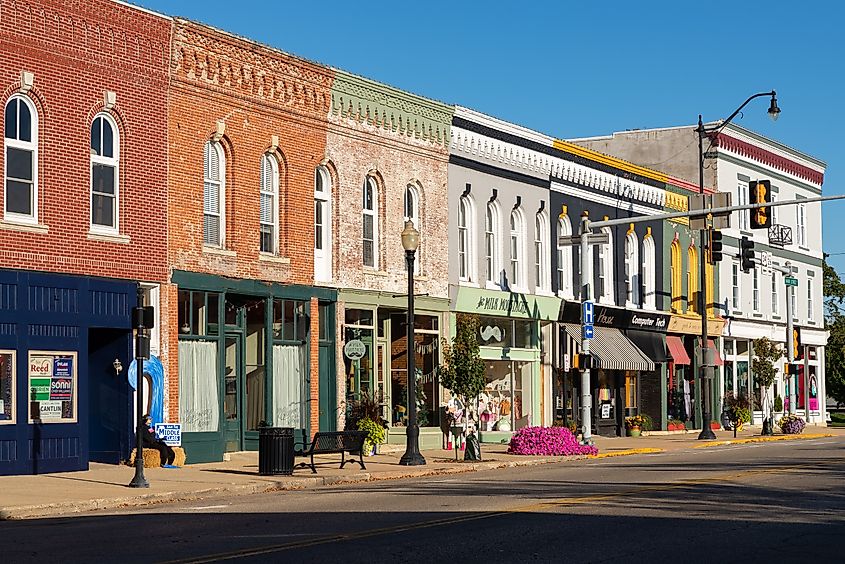
Princeton is one of the few towns in Illinois with a functioning covered bridge still in use. The Red Covered Bridge, built in 1863, crosses Big Bureau Creek just north of town but is currently closed for repairs. Its timbered frame is part of Princeton’s identity, a reminder that this place has never chased speed. Even the Amtrak station, which anchors the town’s south end, feels unrushed, with passengers walking from the platform straight into the historic business district without barriers or fanfare.
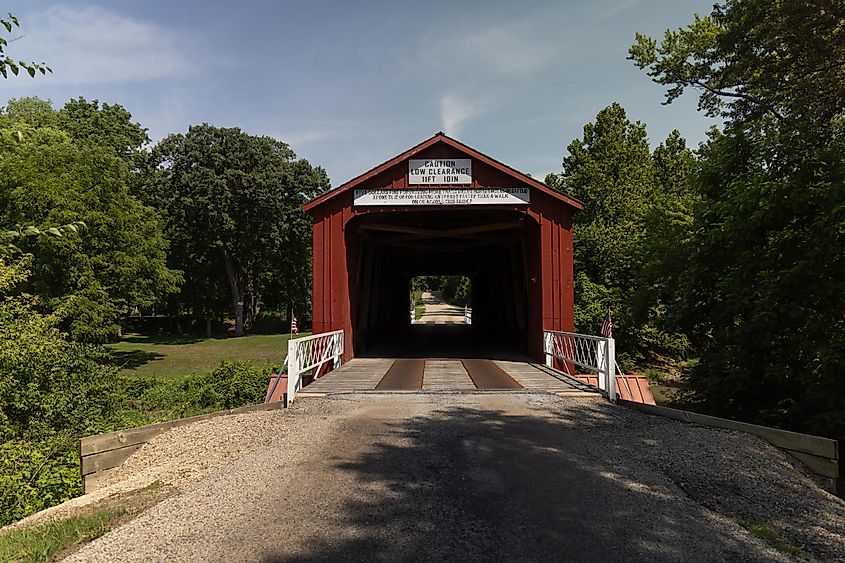
Main Street is divided into North and South by the railroad, each with its own storefronts and rhythm. On the north side, Myrtle’s Café & Espresso offers strong coffee and pressed sandwiches inside a former five-and-dime. At Hornbaker Gardens, just outside town, visitors walk through acres of landscaped plantings and sculpture pieces set among prairie and ponds. The Hennepin Canal towpath, running parallel to town, is used for biking, fishing, or walking in near-complete quiet.
Mount Carroll
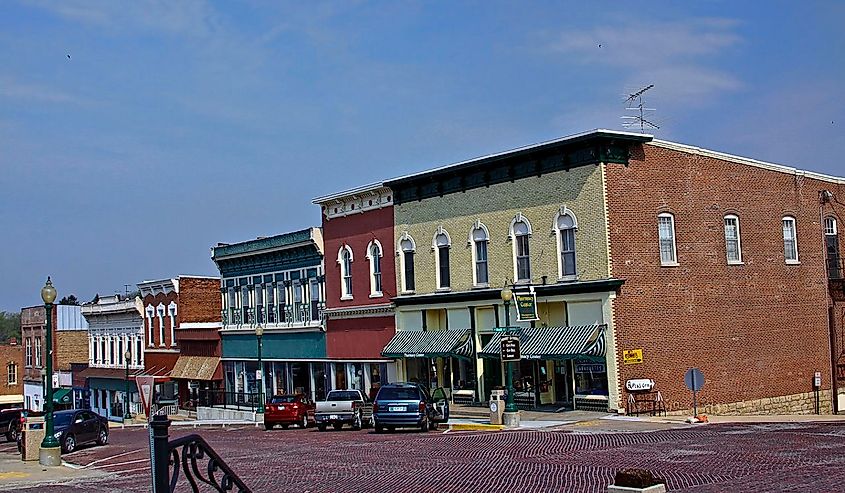
Mount Carroll has no stoplights and no chain stores. It was built on hills instead of a grid, which gives the downtown strange curves and angles, one of the few towns in Illinois where sidewalks slope like streets in a mining village. Brick buildings from the 1800s still hold their original proportions, and many now house secondhand bookstores, art studios, or offices with one-person staffs. The town’s population has hovered near 1,500 for decades, and very little commercial development has crept in from outside.
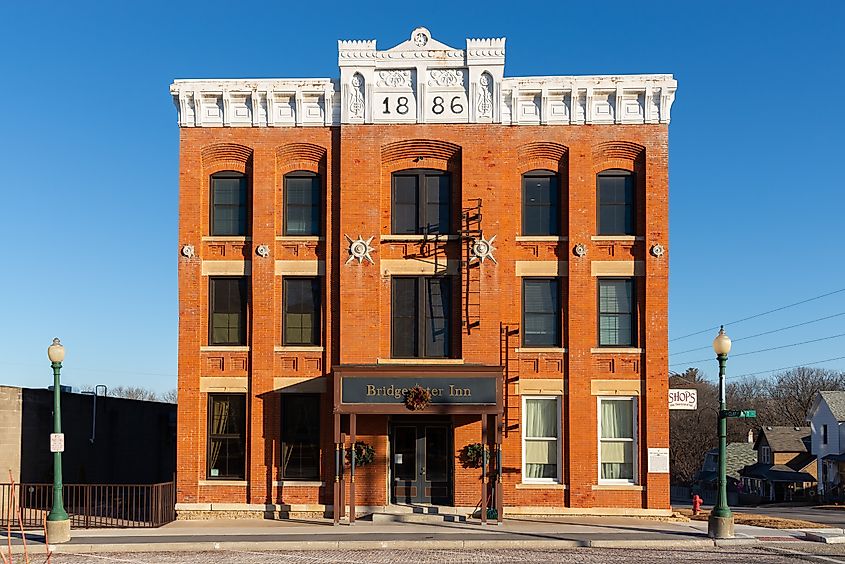
Timber Lake Playhouse, located just south of town in a forest clearing, stages summer repertory theater with union actors in a barn-style building that seats under 400. In town, the Raven’s Grin Inn offers guided tours through a four-story house-turned-art-installation built by one man using scrap metal, puppets, mirrors, and hand-dug tunnels. Molly’s Kitchen & Bar serves pan-fried pork chops and cornmeal cakes in a former carriage house near the courthouse square. The Mount Carroll Public Library, built with local limestone in 1906, still operates under its original charter and opens directly onto the sidewalk. At Point Rock Park, the Waukarusa River flows past a bluff-top overlook, just far enough from downtown to lose cell service.
Oregon
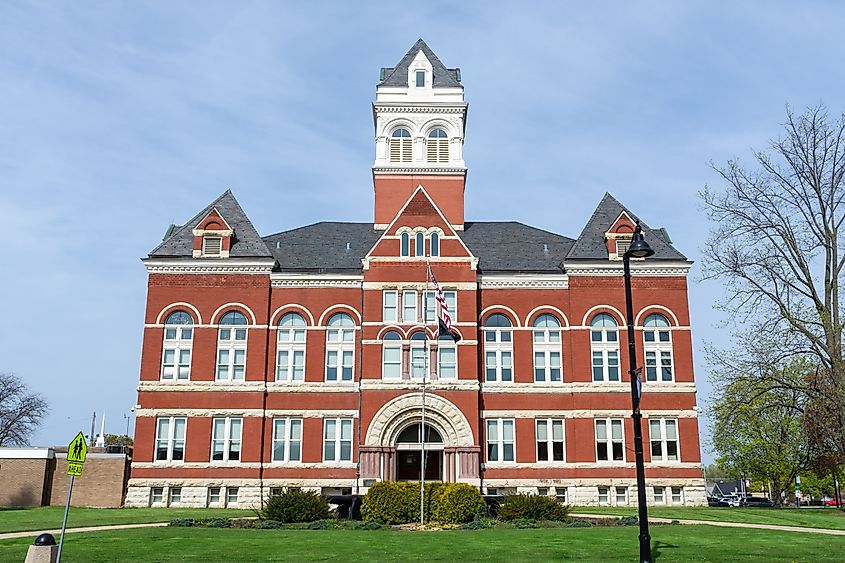
Oregon is defined by a 48-foot concrete monolith. Officially named The Eternal Indian, but often called the Black Hawk Statue, it stands above the Rock River on a bluff in Lowden State Park. It was sculpted by Lorado Taft in 1911, and unlike most outdoor monuments of its era, it faces the land instead of the water. Taft once ran an artist colony just across the river; remnants of that legacy remain in Oregon’s current shape, part river town, part open-air studio.
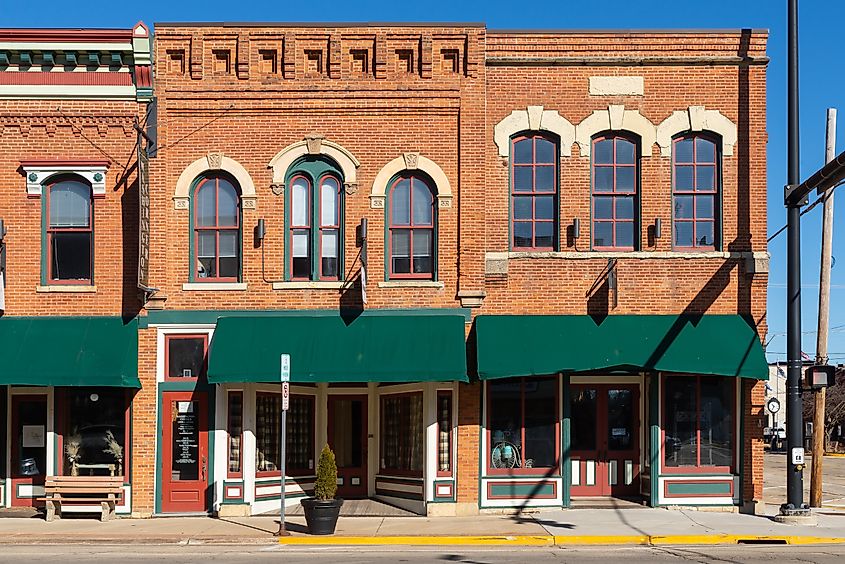
At Conover Square, a converted piano factory on North 3rd Street, dozens of local vendors share space with a functioning model railroad display and one of the state’s smallest historical museums. The Cork & Tap pours regional wines in the upstairs of a former hardware store and hosts live acoustic sets on weekends without a stage. Down the street, Hazel’s Café serves espresso, smoked salmon toast, and rotating baked goods from a galley kitchen that opens directly to the sidewalk. Castle Rock State Park, just five miles south, offers a staircase climb to a sandstone outcrop above the treetops, but the best view of Oregon is still from the river, looking up toward that outstretched statue, half hidden by pine.
Metropolis
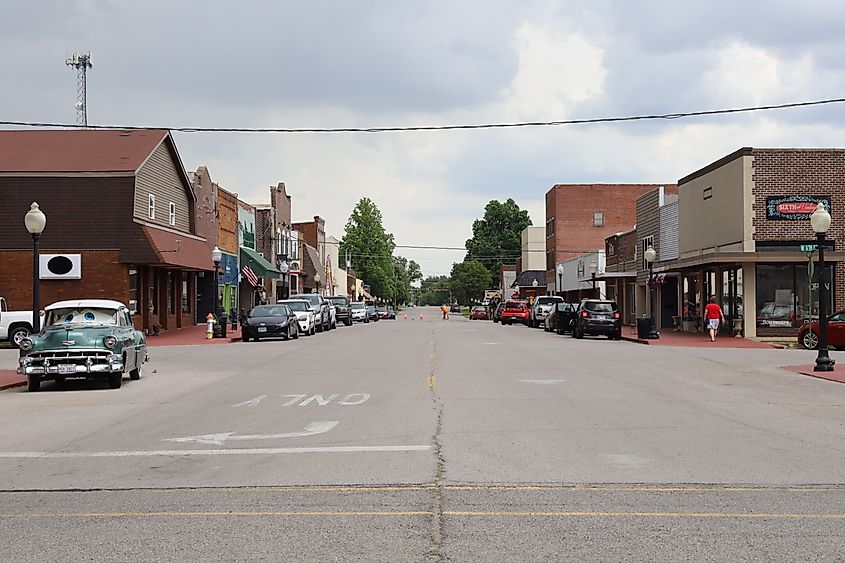
Metropolis declared itself the "Hometown of Superman" in 1972 and never let go of the idea. A fifteen-foot bronze statue of the character stands downtown on Market Street, across from the Super Museum, which holds over 70,000 pieces of memorabilia in a building the size of a corner shop. The city once petitioned DC Comics for official status and got it. The name came first, the identity followed. Few towns its size, just over 5,000, have built a civic brand out of fiction and kept it functioning for half a century.
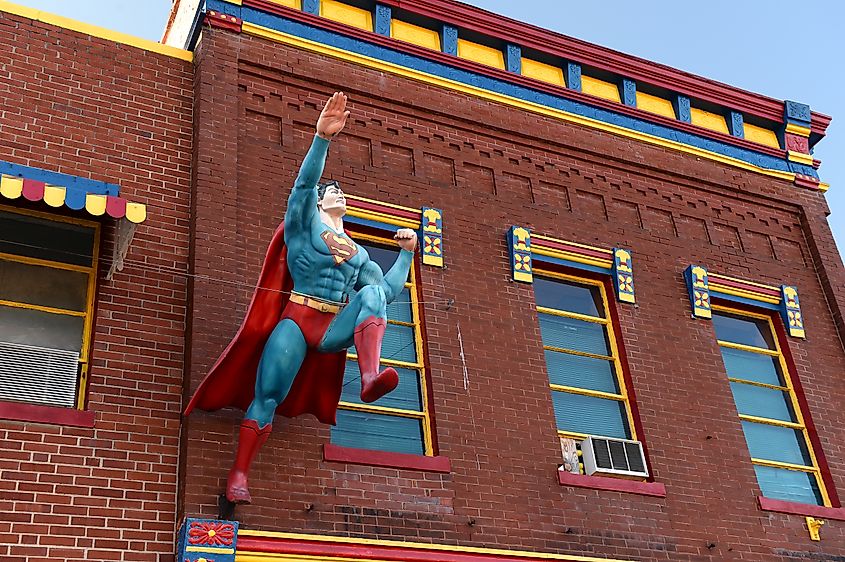
The Superman Celebration in June draws crowds, but most weeks in Metropolis are quiet. Fort Massac State Park covers over 1,400 acres along the Ohio River and includes a reconstructed 1802-era French fort with timber walls and military reenactments each fall. The riverfront promenade behind the fort stays mostly empty, except for joggers and families with folding chairs. Inside Fat Edd’s Roadhouse, the bar runs down the center of the room with beer signs nailed to low ceilings, and catfish gets pulled from the fryer in baskets lined with wax paper. Across from the Harrah’s casino lot, Cordavino’s serves spaghetti and garlic knots from a two-room brick building with no sign out front.
Arthur
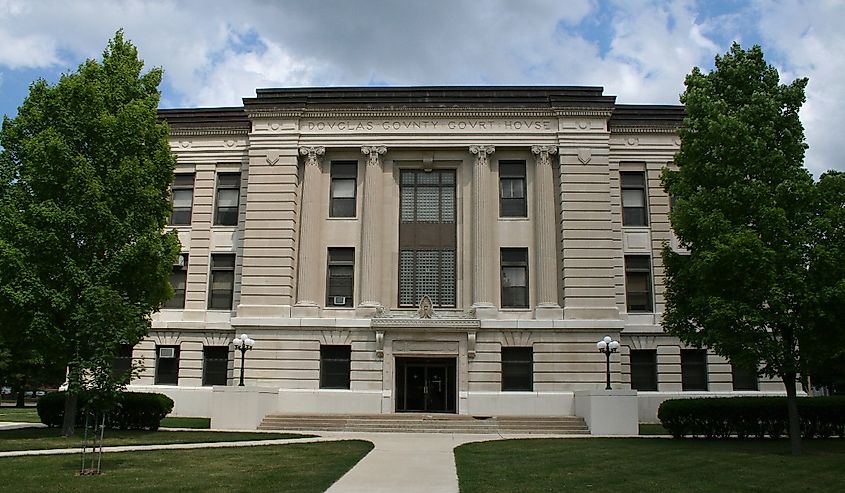
Arthur is Illinois’s largest and oldest Amish settlement, with buggy lanes carved into the main roads and hitching posts outside the IGA. The town operates on two calendars, English and Plain, and most businesses accommodate both. During planting season, horses outnumber trucks south of town. Electricity fades as you leave city limits, and phone service drops fast. What began in 1865 as a small religious outpost has become a working community where modern retail sits next to bulk-food markets run without lights or registers.
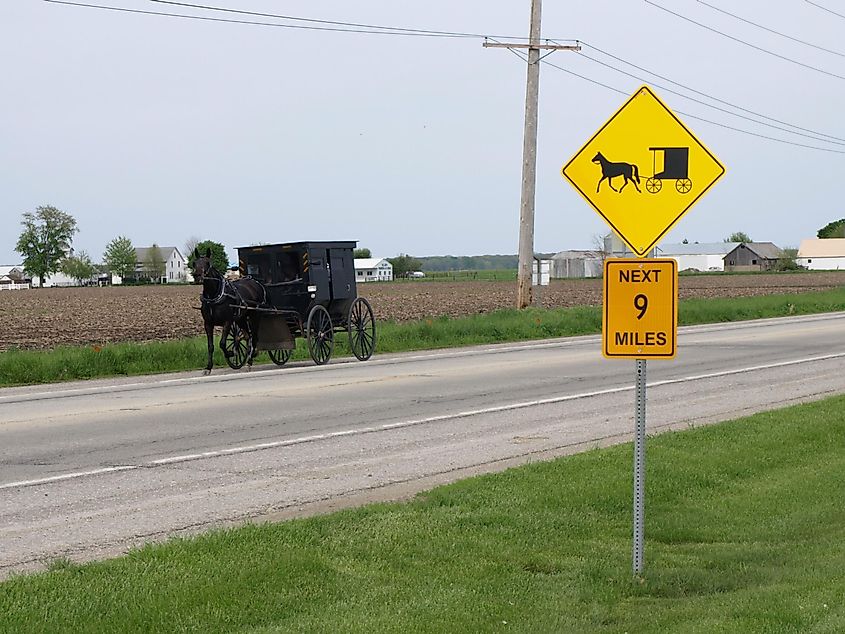
Yoder’s Kitchen serves chicken livers, shoofly pie, and broasted pork seven days a week from a buffet that hasn’t changed format in thirty years. The Great Pumpkin Patch, just outside town on CR 1800, operates from September through October with over 300 varieties of squash, plus a bakery that only uses hand-milled flour. Downtown, Beachy’s Bulk Foods sells pickled okra, homemade egg noodles, and peanut brittle from plain-labeled barrels with handwritten signs. Near the tracks, Dicks Pharmacy still fills prescriptions from a wooden counter with a rotary phone behind it. Inside the Arthur Visitors Center, you can pick up a map that shows every buggy route, barn quilt, and pie stand for fifty miles, but no two visits follow the same route.
Elsah
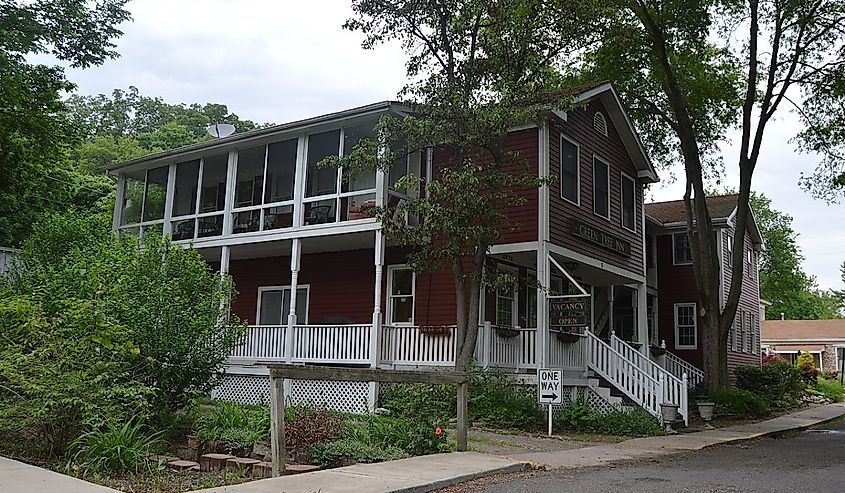
Elsah never expanded. Its stone houses, built before the Civil War, are still pressed into the narrow valley where they were first placed, flanked by bluffs and hemmed in by the Mississippi River. The entire village was added to the National Register of Historic Places in 1973. There are no modern subdivisions, no traffic lights, and no commercial strip. Most of the town sits on two streets, Mill and LaSalle, each lined with limestone homes, iron fences, and hand-painted shutters. Mail is still delivered on foot.
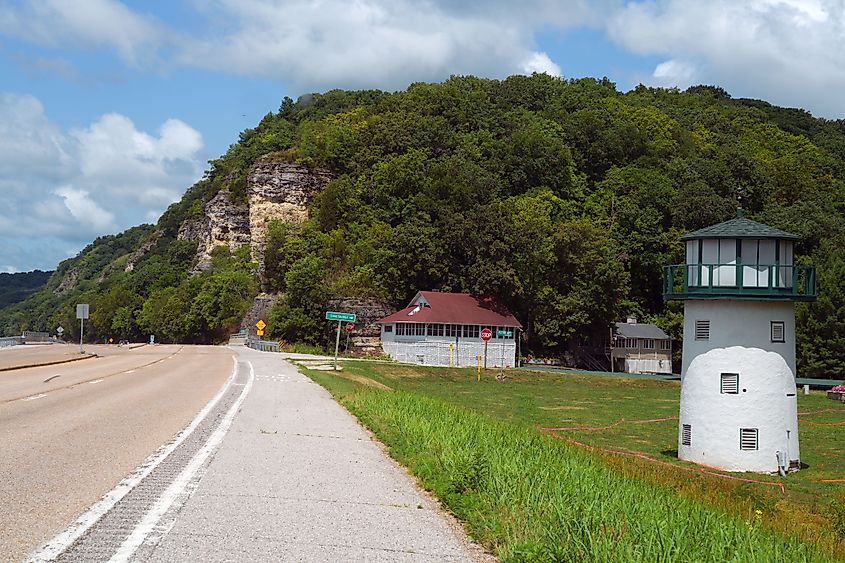
Green Tree Inn operates with five rooms and a wraparound porch that faces the churchyard. On weekends, the Farley Music Hall sometimes opens for chamber performances or historical talks, though most visitors come to walk. Principia College sits on the bluff above town; its campus, designed by Bernard Maybeck, includes concrete colonnades, a domed chapel, and prairie views that reach across the river. Below, the Great River Road passes within earshot, but the sound never quite reaches the sidewalks.
Ottawa

Ottawa hosted the first Lincoln-Douglas debate in 1858. Washington Square, where the speeches took place, remains a public park with original trees, granite monuments, and a bandstand used for summer brass concerts. The town sits at the confluence of the Fox and Illinois Rivers, which makes it one of the few places in northern Illinois where two waterways meet in a visible, walkable downtown. The I&M Canal also runs through the city, with a limestone towpath that begins behind the library and runs east through shade, past stone locks and iron mile markers.
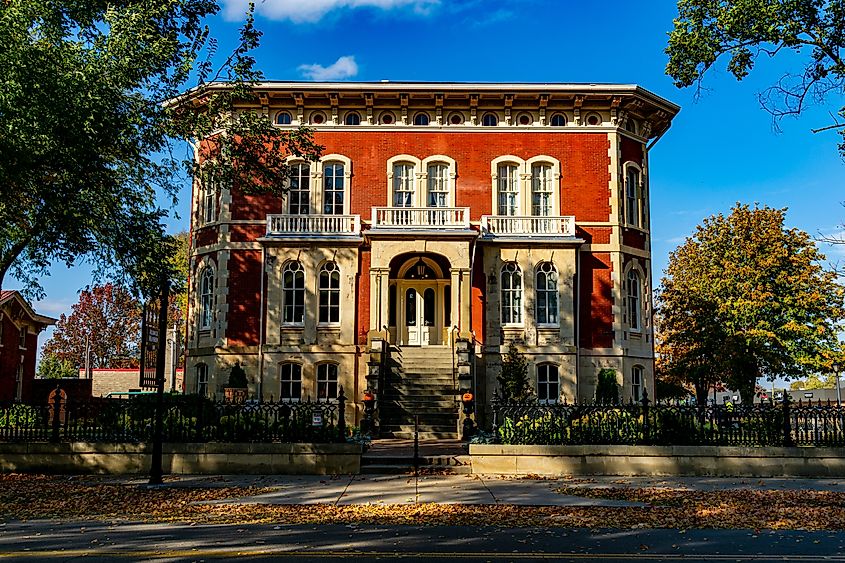
At Tangled Roots Brewing Company, beer is made with hops from nearby farms and served inside a former department store with brick walls and no televisions. Jeremiah Joe Coffee on LaSalle Street opens early with espresso and sourdough toasts and shares its block with bookshops and vintage stores. Just outside town, Dayton Bluffs Preserve offers unpaved hiking loops along a bluff that drops to the river; deer and wild turkeys move through the prairie edge most mornings. Inside the Reddick Mansion, a restored 1855 Italianate villa facing the debate site, docents give walk-throughs of walnut parlors and domed cupolas.
Galena
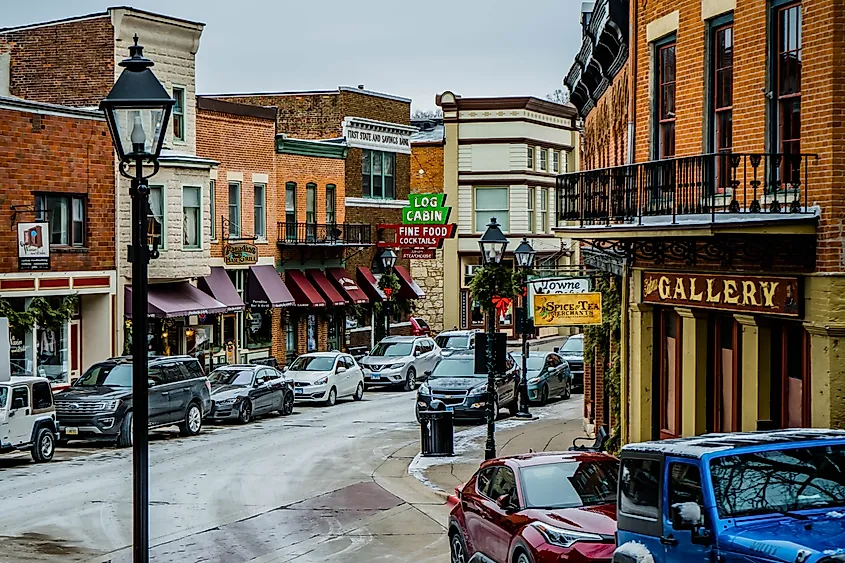
Galena’s downtown is built into a limestone ravine, with 19th-century brick storefronts stacked along a bend in the Galena River. Over 85% of the buildings in the city are listed on the National Register of Historic Places. Ulysses S. Grant lived here before the Civil War and returned afterward as a national hero; his home, donated to the state in 1904, still stands with original furnishings on Bouthillier Street above the river valley. The town was once busier than Chicago, built on lead mining and steamboat traffic, but the pace collapsed with the industries. It never rebuilt quickly.
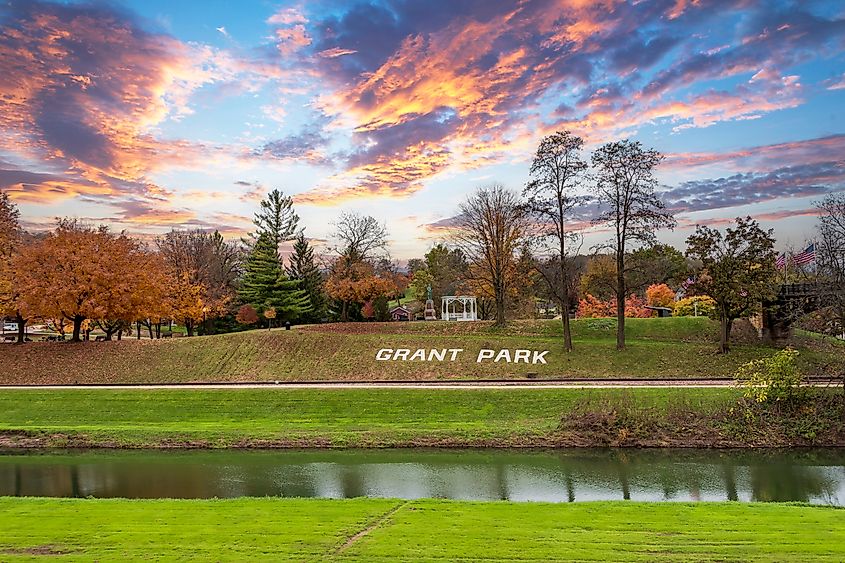
At Galena Cellars on Main Street, wine is served inside a restored 1840s trading post with access to a rooftop deck and a basement tasting room. Just down the hill, the P.T. Murphy Magic Theatre seats under 30 and runs year-round shows without sets, props, or intermissions. Otto’s Place, located across the train tracks in a former boarding house, serves breakfast hash and baked French toast until midday and closes before dark. Horseshoe Mound Preserve, just east of downtown, includes a 180-degree overlook of the Mississippi backwaters, plus footpaths that loop through native prairie and oak savanna without signage, fencing, or mapped direction.
Nauvoo
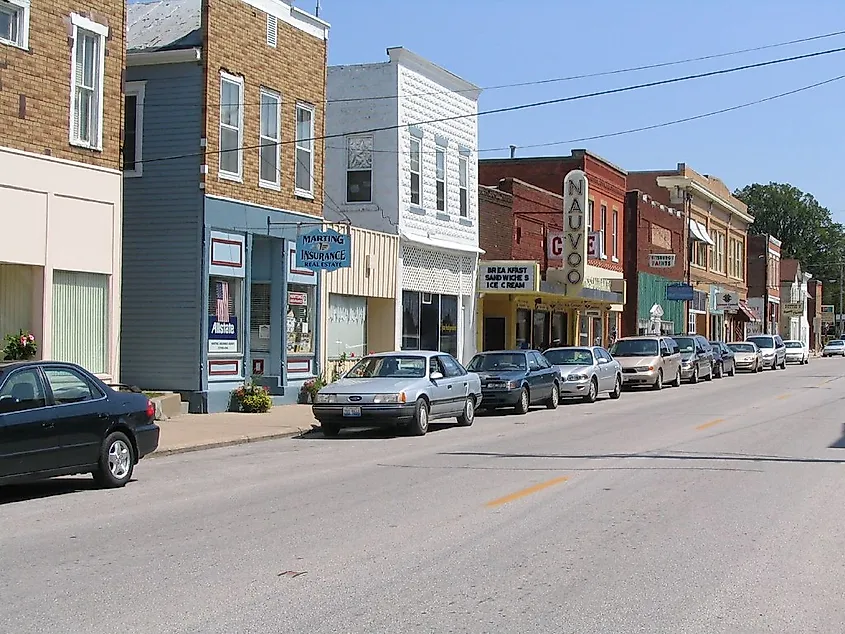
Nauvoo was once one of the largest cities in Illinois, with a population rivaling Chicago in the 1840s. It was founded by Mormon settlers and later resettled by French Icarians, giving the town overlapping legacies of religion, utopianism, and communal labor. Much of the city has been reconstructed or preserved to reflect its 19th-century layout, with working blacksmith shops, ropewalks, and brick kilns maintained by historical interpreters. The Nauvoo Temple, rebuilt in 2002 on the site of the original, stands on a bluff above the Mississippi and marks the western end of the Mormon Pioneer Trail.
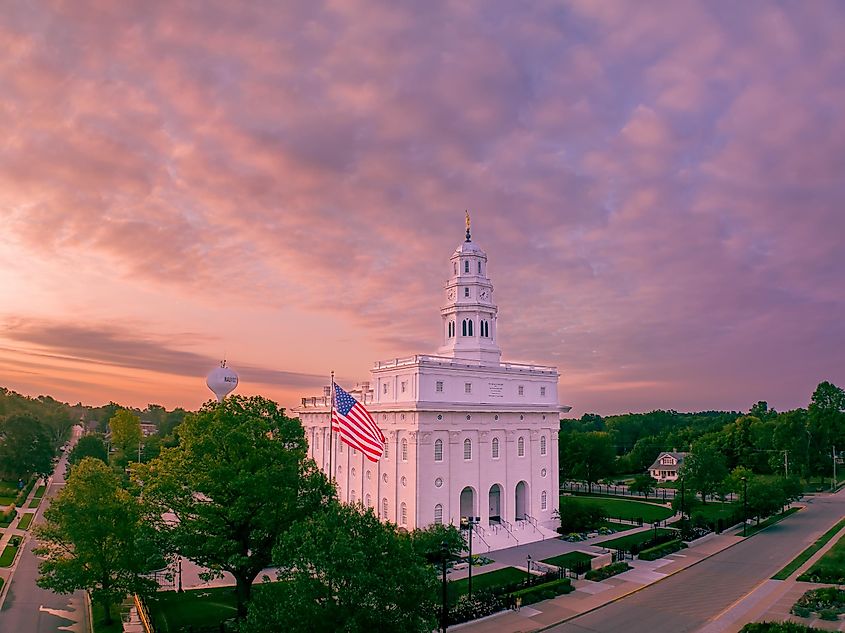
At Nauvoo State Park, the campground wraps around a small lake bordered by cottonwood trees and limestone outcrops. Baxter’s Vineyards, family-owned since 1857, pours wine in a wood-paneled tasting room and operates a kitchen garden behind the bottling shed. Across the street, The Joseph Smith Historic Site offers guided tours of the Red Brick Store, the Smith family homestead, and the original burial plot overlooking the river.
Illinois still keeps room for the unhurried. In these towns, day is measured by train whistles, river light, and small rituals that last: coffee poured on Main Street, a bluff climb before dusk, a library door. They aren’t museum pieces; they’re working places that resist velocity. Choose any, and pace changes first, then your senses. For 2025, let river’s clock set the itinerary, and leave the interstate to everyone else.
